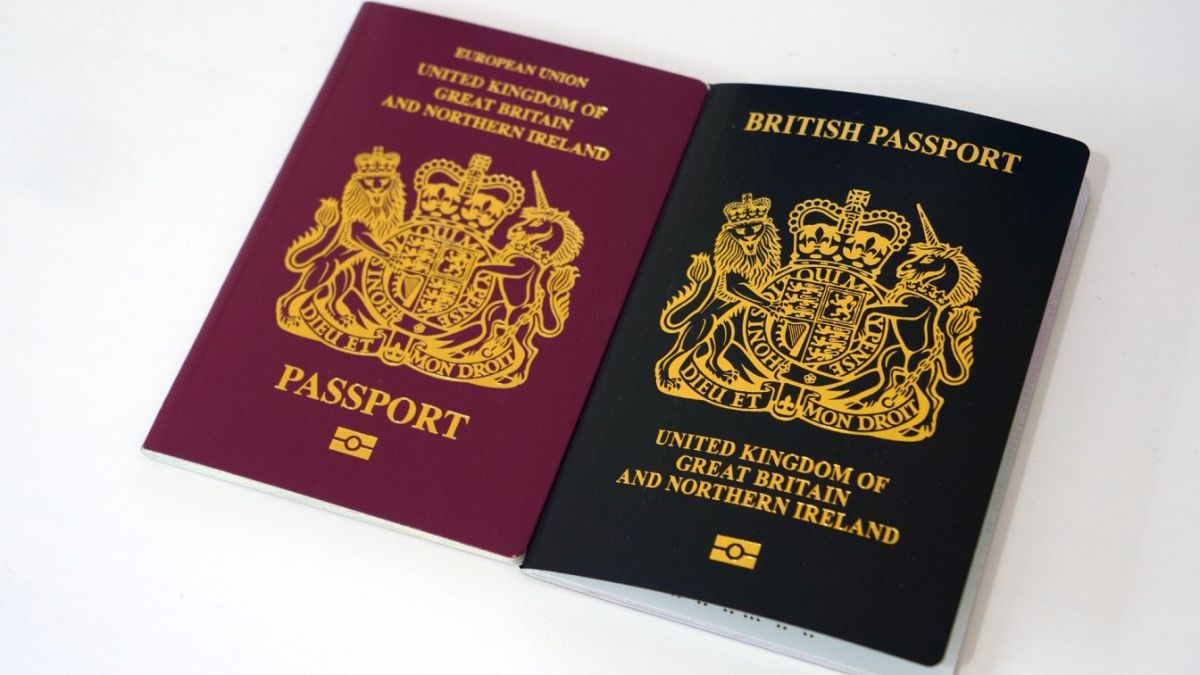Riding the rails: Who travels the most by train in Europe?

Rail travel is helping the EU to reach climate and energy-saving targets – but which country has the most railways and who takes the train most often?
Increasing the use of public transport and minimising car dependency are two significant ways to help Europe reach ambition climate and energy-saving targets. At the heart of achieving both is the continent’s railways.
Rail passenger transport services and usage rates vary widely across Europe. Switzerland, Austria, France and Sweden have the highest figures for railway use, according to different metrics.
Who travels the most by train in Europe? Which countries have the highest share of train use when it comes to passenger transport? Which countries have the highest railway line density?
There are different metrics for measuring the prevalence of rail passenger transport. One of them is passenger-kilometres data which, is the average distance travelled on railways (national and international travel) per inhabitant.
The total passenger transport is equal to the sum of national and international passenger transport. The nationality of the passenger is not taken into consideration. Instead, the location of the travel is considered in datasets of passenger-kilometres per inhabitant and number of journeys per inhabitant.
For international journeys, the passenger-kilometres data only includes the distance travelled on national networks, or, in other words, the part of the journey that occurs within a particular national territory, not the distance of the whole journey.
As there is a remarkable difference between pre-COVID-19 travel and the pandemic period, it is helpful to consider both 2019 and 2021 figures. The comparisons here are mostly based on 2019 data.
Rail transport: Passenger-kilometres per inhabitant
In 2019, passenger-kilometres per inhabitant in national and international journeys ranged from 117 km in Greece to 2,378 km in Switzerland. The EU average was 927 km. In 2021, these countries did not change, but the numbers did. It was 61 km in Greece and 1,536 in Switzerland, while the EU average fell to 583 km.
In 2019, Austria (1,440 km) had the highest number of passenger-kilometres in the EU, followed by France (1,437 km), Sweden (1,429 km), Germany (1,208 km) and the UK (1,078 km).
Denmark (1,063 km), Czechia (1,019 km) and Italy (939 km) were other countries with numbers higher than the EU average.
The Balkan countries generally had lower numbers of passenger-kilometres per inhabitant.
Malta and Cyprus do not have railways.
Factors in international travel
International travel reflects the importance of international commuters within the workforce, the relative proximity of capitals or other cities to international borders, access to high-speed network rail links and positions along major international transport corridors according to Eurostat.
In 2021, Luxembourg had by far the longest average distance for international rail travellers, at 136 kilometres per inhabitant, followed by Switzerland (65.2 km).
Czechia (57.5 km), France (48.6 km), Germany (43.7 km), Denmark (36.8 km) and Austria (26 km) had higher averages of passenger-kilometres per inhabitant in international journeys than the EU average (22.7 km).
Estonia, Latvia, Lithuania and Greece did not report any data on international rail journeys.
Number of train journeys per inhabitant
In 2019, Switzerland also led in the number of train journeys per inhabitant with 60.8 travels. Among other countries, this figure ranged from 1.8 journeys in Lithuania to 40.8 journeys in Luxembourg. The EU average was 18.4 trips.
All these numbers were significantly lower in 2021.
In 2019, the number of train journeys per inhabitant was higher than the EU average in Denmark (35.6), Germany (35.4), Austria (31.4), the UK (27.6), Sweden (25.9) and France (18.8).
Share of trains in passenger transport
The modal split of inland passenger transport is another significant indicator. This value describes the relative share of each mode of transport, such as by road or rail, among the total transport modes.
According to Eurostat, inland transport covers all transport activities that go over land or all modes besides air and maritime transport. In particular, it includes travel by i) passenger car, ii) trains and iii) coaches, buses and trolley-buses.
Shares are calculated for each mode from among the total passenger-kilometres based on data according to the territoriality principle, reflecting all transport performed within the territory of a given country.
In 2019, trains accounted for 8 per cent of inland passenger transport in the EU, but this fell to 6 per cent in 2021. In 2019, the shares of trains in inland passenger transport ranged from 1 per cent in Greece to 13.9 per cent in the EU.
Among the European countries for which data is available, North Macedonia (0.6 per cent) had the lowest share and Switzerland (20 per cent) had the highest.
In 2019, similarly to other metrics, Switzerland was followed by Austria (20 per cent), Sweden (12.2 per cent), the Netherlands (11.2 per cent) and France (10.3 per cent).
Germany (9.3 per cent) and the UK (8.5 per cent) also had higher shares than the EU average.
Balkan countries such as Serbia (0.8 per cent), Greece (1 per cent) and Bulgaria (2.2 per cent) had very low shares of trains in inland passenger transport.
Density of railway lines
In 2021, the railway line density, which is measured as kilometres per 1,000 km² of land area, ranged from 8 km in Albania to 133 km in Switzerland.
In the EU, it ranged from 18 km in Greece to 123 km in Czechia.
Data on rail networks include both high-speed and conventional lines. These figures exclude the networks of light rail and metros, as well as trams.
Rail network density was also higher than 100 km in Belgium (2010 data, 118 km), Germany (109 km) and Luxembourg.
This density was 67 km in the UK, 43 km in France and 32 km in Spain.
EU calls for less individual energy consumption
The European Commission has been calling for less individual energy consumption, and public transport has major potential in reducing energy consumption.
The amount of energy required for one person to travel one kilometre by public transport is clearly much lower than that by private car.
Source: Euro News














